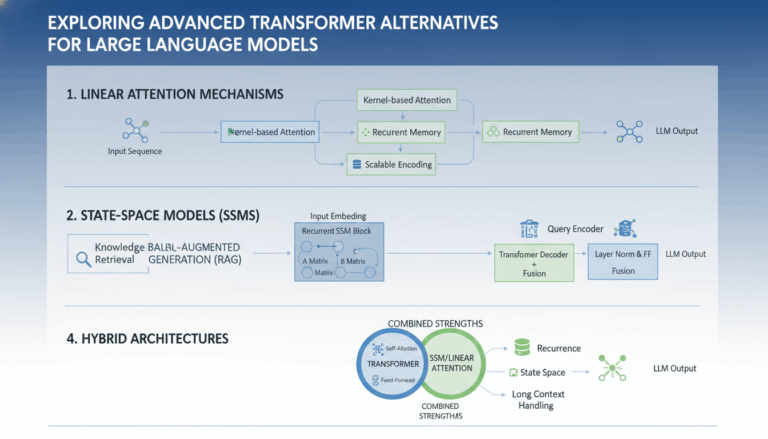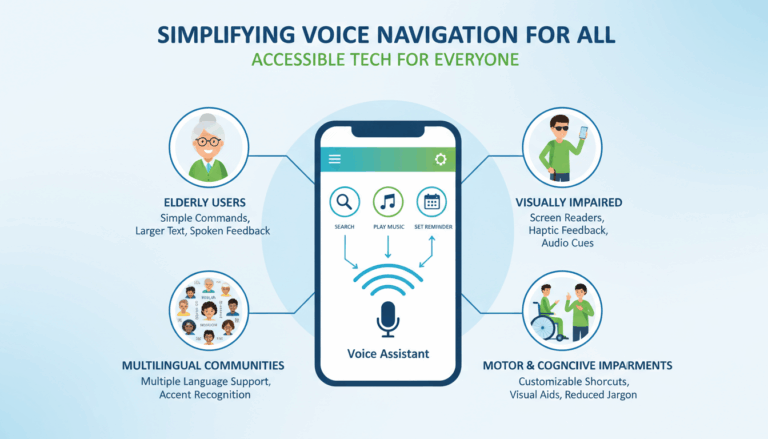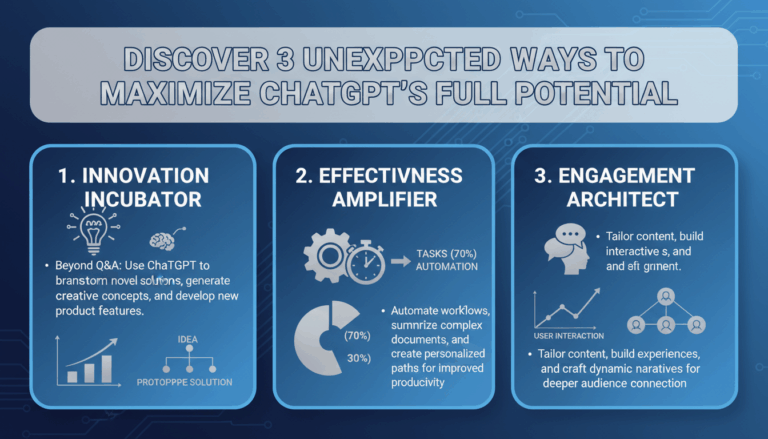Introduction to OpenAI’s Impact on Digital User Experiences
OpenAI has become a pivotal force in reshaping digital user experiences by leveraging the capabilities of artificial intelligence to enhance how users interact with technology. At the core of this transformation is OpenAI’s use of sophisticated machine learning models that have revolutionized various aspects of user engagement, personalization, and accessibility across digital platforms.
OpenAI’s Language Models, like GPT (Generative Pre-trained Transformer), serve as a testament to its impact on digital interactions. These models have been adapted to perform a wide range of functions, from generating human-like text to facilitating seamless conversations in chatbots, thereby enhancing customer service experiences. Companies can now deploy AI-driven customer support systems capable of understanding and responding to user queries with remarkable accuracy and contextual awareness. This innovation not only improves response speeds but also allows for a more personalized experience by tailoring interactions based on previous user data and preferences.
In the realm of content creation, OpenAI’s tools have empowered both individuals and businesses to streamline their content generation processes significantly. For instance, bloggers, educators, and media companies utilize AI to produce high-quality writing drafts, curate engaging narratives, and even perform tasks such as headline generation and content suggestions. This automation is not only a time-saver but also boosts creativity by allowing human resources to focus on refining and personalizing content rather than creating it from scratch.
Moreover, OpenAI’s technologies play a crucial role in enhancing accessibility for digital platforms. By integrating advanced natural language processing capabilities, these tools can facilitate real-time translation services, making content accessible to non-native speakers and breaking down language barriers across the globe. Additionally, OpenAI’s vision-based applications, powered by reinforcement learning and other AI paradigms, provide sophisticated image and video analysis, enriching user experiences in fields like e-commerce and digital media by aiding in object recognition and enhancing content discovery.
The realm of software development is another area significantly impacted by OpenAI’s innovations. Developers are increasingly utilizing AI to assist in code generation and debugging. Tools like Codex, derived from OpenAI models, are capable of writing code in multiple programming languages based on natural language prompts. This not only increases developer productivity but also opens the door for non-coders to enter the software development space by democratizing access to programming capabilities.
Finally, OpenAI’s ethical and responsible approach to developing AI technologies further underscores its influence on digital user experiences. By advocating for transparent and equitable AI, OpenAI ensures that its technology is deployed responsibly, promoting trust and ensuring user data privacy.
OpenAI’s integration into various digital platforms illustrates a shift towards more intuitive, efficient, and inclusive user experiences, ultimately setting a new standard for how technology and humans interact in the digital age.
Enhancing User Engagement Through AI-Powered Personalization
AI-driven personalization is revolutionizing how users interact with digital platforms by creating tailored experiences that boost engagement. The advent of advanced AI technologies allows businesses to move away from the one-size-fits-all approach, designing customized user journeys tailored to individual preferences.
AI systems analyze vast amounts of data concerning user behavior, preferences, and interactions. These insights enable systems to predict user needs and deliver personalized content, offers, and recommendations. For example, streaming services utilize AI to suggest shows based on viewing history and preferences, thereby elevating user satisfaction and retention. Similarly, e-commerce platforms analyze browsing and purchasing patterns to recommend products that align with user interests, driving increased sales and customer loyalty.
Machine learning models, particularly those based on neural networks, empower organizations to offer real-time personalization. By assessing user data as interactions occur, AI adapts experiences on-the-fly, maintaining relevance and engagement. Consider the use of chatbots infused with natural language processing (NLP) capabilities—these systems can understand queries contextually and cater responses uniquely to each user. Such dynamic interactions not only enhance the customer support experience but also build a rapport that fosters long-term engagement.
Moreover, AI technologies enable personalization at the micro-interaction level, whereby every click, scroll, and hover can inform immediate user interface adjustments. Adaptive site design, for instance, can alter the display of content, layout, and navigation paths, ensuring they fit the user’s preferences seamlessly. This adaptability not only enhances usability but also optimizes content discovery, enticing users to explore further.
Incorporating AI for personalization also involves strategic data handling to ensure user privacy while maximizing personalization benefits. Organizations are leveraging anonymized data with robust consent mechanisms, striking a balance between service personalization and protecting user data. OpenAI and similar entities advocate for transparent data usage policies, fostering trust and compliance with privacy regulations like GDPR.
To effectively integrate AI-powered personalization, businesses often deploy a layered strategy. Initially, establishing a clear understanding of target user demographics is critical. Companies then build robust data infrastructure to support AI algorithms, allowing real-time analysis and implementation. Collaborating with AI solution providers or developing in-house expertise enhances the capability to draw actionable insights from user data. Continuous optimization and testing, guided by machine learning outputs, ensure these systems remain effective and aligned with evolving user expectations.
In conclusion, AI-powered personalization transforms user engagement in digital spaces by crafting targeted, meaningful experiences. As AI technologies continue to evolve, their capacity to refine and customize user interactions will only expand, setting new benchmarks for how effectively digital platforms cater to individual user needs.
Integrating Voice and Image Capabilities for Interactive Interfaces
Emerging as a powerful axis of transformation in digital interactions, the integration of voice and image capabilities significantly enhances the functionality of interactive interfaces. This development leverages cutting-edge AI technologies, such as those by OpenAI, which enable devices to understand, process, and respond to both speech and visual inputs, thus crafting a more seamless, engaging user experience.
To start with, voice interaction has become indispensable in today’s tech landscape, with voice assistants like Alexa, Siri, and Google Assistant setting the bar. These systems utilize natural language processing (NLP) to interpret and respond to spoken requests, making technology more accessible and convenient. Implementing similar voice capabilities in interactive interfaces involves employing robust NLP models that can accurately decipher user intent, even amidst diverse accents and languages. For developers, using APIs such as OpenAI’s Whisper or Google Cloud Speech-to-Text allows them to integrate these capabilities conveniently into their applications. These tools help convert audio signals into text, followed by the semantic analysis required to understand and respond appropriately.
The integration of image capabilities revolves around the application of computer vision technology, where machines gain the ability to “see” and interpret visual data. This is particularly transformative in sectors like retail, where visual search allows users to find products based on images rather than textual input, thereby streamlining the shopping experience. Technologies like OpenAI’s CLIP (Contrastive Language–Image Pre-training) can be utilized for such purposes, offering models that understand and relate textual descriptions with images. Additionally, deep learning frameworks like TensorFlow and PyTorch provide pre-trained models and libraries that aid developers in building powerful image recognition systems to recognize objects, faces, and even perform scene analysis.
Combining voice and image recognition can create highly interactive interfaces that deliver a more holistic user experience. For instance, in the automotive industry, this integration supports driver-assistance systems where voice commands coupled with visual cues can enhance navigation, such as identifying hazards while responding to driver queries. Furthermore, educational platforms benefit by using these technologies to offer multi-sensory learning experiences, accommodating various learning styles by allowing users to upload images for visual recognition tasks complemented by assistive voice guidance.
Integrating these capabilities into existing platforms requires a multifaceted approach. Initially, determining the user needs and context of application is critical. This involves user research to identify scenarios where voice or visual interaction would significantly enhance usability or accessibility. Then, selecting and implementing the appropriate technological stack is key. For instance, leveraging cloud-based AI services can reduce the computational overhead of processing voice and image data locally.
Testing is another vital step, ensuring that the interface performs reliably across different scenarios and user inputs. Open feedback loops with users during beta testing phases are crucial for refining the system responses and interactions. It’s also essential to maintain privacy and security by ensuring all data used in these interactions complies with relevant regulations such as GDPR, which entails securing user consent and anonymizing data as needed.
Embracing voice and image integration in interactive interfaces not only diversifies user interaction modes—it fundamentally enhances engagement and accessibility, allowing for a more intuitive and personalized digital interaction landscape.
Automating Customer Support with AI-Driven Chatbots
The integration of AI-driven chatbots into customer support systems has revolutionized how businesses interact with their customers, enabling faster and more efficient service. These AI-powered tools rely on advanced natural language processing (NLP) and machine learning algorithms to understand and respond to customer inquiries in real-time, significantly reducing overhead costs and streamlining operations.
Firstly, unlike traditional customer support systems that require human agents to handle each query manually, AI-driven chatbots can manage multiple customer interactions simultaneously with a high degree of accuracy. This capability is primarily due to the sophisticated algorithms that power these bots, enabling them to understand context and intent behind queries. By employing resources like OpenAI’s GPT models or Google’s Dialogflow, businesses can develop chatbots capable of comprehending and responding to a diverse range of inquiries, regardless of complexity.
For example, a customer using an AI-driven chatbot to report an issue with a product can describe their problem in natural language. The chatbot processes the input, references its extensive database for potential solutions, and offers immediate assistance. If the issue is beyond its capability, the chatbot can efficiently escalate the matter to a human agent, complete with contextual information to ensure a seamless transition.
Moreover, these chatbots are designed to be self-improving. Utilizing machine learning, they adapt to new information and scenarios by analyzing past interactions to refine their responses. This iterative learning capability ensures that the chatbot continuously becomes more adept at handling customer queries over time. A practical illustration of this is in e-commerce platforms where chatbots automatically update their knowledge base as new products are introduced, ensuring customers receive up-to-date information.
In addition to improving efficiency, AI-driven chatbots enhance customer satisfaction by providing 24/7 service. Customers can obtain assistance at any time, eliminating the traditional working-hours restrictions. This accessibility not only improves user satisfaction but also increases customer loyalty as users feel supported around the clock.
Implementing a chatbot requires specific steps to ensure its effectiveness. Businesses must begin by identifying the most common customer queries which the bot will address. This involves analyzing customer interaction data to flag repetitive tasks or inquiries that can be automated. Then, selecting an appropriate AI platform is crucial, as it should support natural language understanding and seamless integration with existing CRM (Customer Relationship Management) systems.
Post-deployment, monitoring and periodically updating the chatbot is essential. Regularly reviewing interaction logs helps in identifying areas of improvement. Feedback loops where customers can rate their interaction can also drive enhancements, ensuring the chatbot evolves with growing customer expectations.
Lastly, maintaining transparency about the chatbot’s data usage is vital to gaining customer trust. Businesses should be clear about how data is collected and used while adhering to privacy regulations like GDPR to protect customer information.
Incorporating AI-driven chatbots into customer support not only elevates service delivery but also opens up new avenues for operational efficiency, ultimately offering businesses a competitive edge in today’s digital landscape.
Leveraging AI for Data-Driven Decision Making in App Development
Artificial intelligence (AI) stands at the forefront of app development, transforming decision-making processes by providing profound data insights. At its core, leveraging AI in data-driven decision making involves using machine learning and analytics to parse large datasets, spot trends, and generate actionable insights, thereby streamlining various phases of app development.
AI enhances the decision-making process primarily through predictive analytics. It involves training machine learning models on historical data to predict future patterns and user behavior. For example, in app development, predictive analytics can forecast user engagement metrics or potential problem areas by analyzing past user interactions. By integrating these insights early, developers can tailor the user experience and improve app features, leading to higher user retention and satisfaction.
Furthermore, AI empowers developers with A/B testing optimization. Traditional methodologies often require extensive time and resources, yet AI can automate and enhance this process. Machine learning algorithms can analyze complex data from A/B tests quickly and accurately, determining the most effective design variations, messaging strategies, or functionality changes. This enables developers to iterate faster and implement enhancements that significantly boost app performance and user engagement.
Personalization, as part of data-driven decisions in app development, can be exponentially enhanced by AI. AI systems can personalize user experiences by analyzing behavior, preferences, and usage patterns. This real-time analysis allows apps to provide tailored content, recommendations, and functionalities, effectively increasing user engagement. Streaming services, for example, utilize AI to analyze viewing habits and recommend new content or features that match individual user tastes, thereby improving user satisfaction and loyalty.
AI also facilitates real-time data processing and feedback loops within apps, allowing developers to adjust operational decisions dynamically. By integrating AI-driven analytics tools, developers can monitor app performance metrics, such as load times, user feedback, and error reports, in real-time. This responsiveness accelerates the cycle of feedback and improvement, enabling quicker troubleshooting and more agile development strategies.
Moreover, AI enhances risk management in development decision-making through anomaly detection. Machine learning models can identify unusual patterns or behaviors indicative of potential security breaches or system failures. By foreseeing and mitigating these risks, developers safeguard app integrity and user data security, fostering trust and reliability.
Implementing AI for data-driven decision-making involves several strategic steps. Initially, building a robust data infrastructure to collect and process data is vital. This infrastructure must support AI algorithms capable of handling high-volume and high-velocity data streams efficiently. Observability tools are crucial for constantly monitoring the system’s effectiveness and reliability.
The selection of appropriate machine learning models is the next critical step. Models should align with specific objectives, such as classification, prediction, or recommendation. Utilizing platforms that offer pre-trained models, such as TensorFlow or PyTorch, can accelerate this process.
Continual model training and optimization are essential to accommodate evolving user behaviors and data landscape. Developers must establish procedures for frequent retraining of AI models using updated datasets, ensuring the app remains relevant and effective.
Lastly, it is important to consider ethical AI implementation. Data privacy and security must be prioritized, adhering to regulations like GDPR ensures the ethical use of AI and garners user trust. AI systems should be transparent and accountable, with clear policies regarding data usage.
By harnessing the power of AI, developers can drastically enhance data-driven decision-making within app development—delivering optimized, personalized, and innovative applications that exceed user expectations and adapt fluidly to the digital landscape’s continuous evolution.
Ensuring Data Privacy and Security in AI-Integrated Applications
Incorporating artificial intelligence into applications introduces several complexities, especially when considering data privacy and security. As AI systems integrate more deeply into various applications, safeguarding user information becomes paramount. Implementing robust measures to ensure the protection of personal data not only fosters trust but is often a regulatory requirement under laws such as the General Data Protection Regulation (GDPR) and the California Consumer Privacy Act (CCPA).
AI applications typically involve substantial data processing and analysis, which can increase vulnerabilities to privacy breaches if not properly managed. One of the first steps in ensuring data privacy is the adoption of data minimization principles. This approach advocates for the collection of only necessary data, thereby reducing the risk of unauthorized access and potential misuse. Developers should engage in privacy-by-design, embedding privacy features within the architectural layers of AI applications to proactively address potential threats.
Encryption is a critical tool in securing data both at rest and during transmission. By utilizing robust encryption protocols, developers can ensure that any intercepted data remains unreadable to unauthorized parties. For instance, end-to-end encryption can protect user data across the various stages of processing, ensuring confidentiality and maintaining the integrity of the information.
Furthermore, anonymization techniques play a vital role in protecting user identity. By stripping datasets of personally identifiable information (PII), developers can leverage valuable data insights without compromising the privacy of individuals. Techniques such as data masking, tokenization, and differential privacy allow organizations to analyze data while maintaining anonymity. Differential privacy, in particular, adds random noise to datasets, helping preserve privacy while enabling detailed analysis.
Access control mechanisms are integral to securing AI applications. Implementing robust authentication and authorization measures ensures that only authorized personnel and systems can access sensitive data. Multi-factor authentication (MFA) and role-based access control (RBAC) systems help in tightly monitoring and controlling access, reducing the risk of insider threats and external breaches.
Regular audits and assessments of AI systems are necessary for maintaining security standards. These evaluations should focus on both technical and legal compliance with prevailing data protection regulations. Conducting penetration testing and risk assessments helps in identifying vulnerabilities and reinforcing security protocols.
User transparency and consent are also crucial components in ensuring data privacy. Applications must clearly communicate to users about the data being collected, the purposes for data use, and how it is being protected. Privacy notices and consent forms should be easily accessible, comprehensible, and regularly updated to reflect any changes in data handling practices.
Moreover, adopting continuous monitoring and incident response strategies ensures that any anomalies or breaches are quickly detected and addressed. Setting up alert systems and response protocols aids in swift damage control and remediation, minimizing the impact of potential security incidents.
Incorporating these strategies into AI-integrated applications helps not only in safeguarding data but also in building trust with users. This trust is critical as applications grow more sophisticated and data-centric, with stakes for privacy and security higher than ever. The implementation of comprehensive privacy and security measures lays a solid foundation for ethically integrating AI into digital spaces, satisfying both legal requirements and user expectations.



